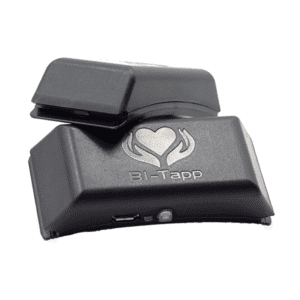Going back to school is often a time of heightened anxiety for everyone: students, parents, caregivers and educators. Everyone benefits from knowing a few basic tips to proactively manage your anxiety or the anxiety of your children or students. At times of heightened stress and anxiety, simple strategies are the best approach to achieve success. It is important to know the “Help in the Moment” strategies that will work for all of us, no matter our age.
The difference between a calm mind and an anxious mind
When your mind is calm, you feel safe, which allows you to able to engage in new learning. When you are in this mindset, you will be able work at something that might be challenging without being overwhelmed by the task. You will have greater insight which help you see things better and apply learning to your life more effectively. (1) When your mind is calm, you will have greater flexible thinking. This means you consider different options to solve a problem and you are able to interact others more easily. When your mind is calm, you are more aware of your feelings but you are not overwhelmed by them. You are also able to connect with others more easily. A calm mind allows you to able to be your best self.
Anxious Mind
When your mind becomes anxious, you will typically begin to feel overwhelmed and have a difficult time thinking clearly. You will become more easily irritable and agitated. An anxious mind activates the middle part of your brain that begins to release stress hormones. This is done to prepare you for the threat your nervous system is perceiving. We need this process to happen if we are truly in danger. However, when this system is activated and you are safe, you aren’t able to absorb new learning. Your thinking will become more rigid. Students who are overwhelmed, triggered or anxious are bound to give up more quickly. Students will often say something like, “I can’t do this”, “It’s too hard” when they are overwhelmed or anxious.
When someone is in a heightened state for an extended period of time, they often feel tired after the stressful event is over. Your nervous system is trying to recover from the stress of the day by withdrawing from others. This often happens to adults who have stressful jobs (educators). After a long day of dealing with many stressful events as well as adjusting to many ongoing stressors associated with their job, they come home exhausted. This leads to burnout and begins to negatively impact work performance and personal relationships.
Help in the Moment strategies
The window of tolerance is an excellent framework to describe the different states of mind. All of us go out of our window of tolerance which means the level of stress we can tolerate at any given moment, but we want to return to the “green zone” as quickly as possible because this is when we function at our best. The easiest way to return to the green zone is to implement the “Help in the Moment” strategies.
Activating your senses is the easiest way to help your nervous system begin to calm down and shift to your window of tolerance. The problem is that the more escalated a person becomes (behaviorally or high anxiety), the less likely they are to do anything you ask them to do. This is because their reasoning brain is not in the driver’s seat making decisions. The anxious mind is more focused on safety and is not able to take in new information. The Help in the Moment strategies are simple to do, no matter your age. You can do these techniques at home, at school, even while sitting in a classroom taking a test.
 Bi-Tapp
Bi-Tapp
Bilateral tapping is the easiest way to reduce your anxiety and stress levels in a short amount of time. If you have the Bi-Tapp tappers, hold them or wear them. The bilateral tapping will do the tapping for you, this enables your nervous system to “automatically” begin to calm down. Think about a baby who is upset and crying. “You” help them calm down. By picking this child up and gently bouncing or rocking back and forth, they begin to calm down. The tappers work in this same way. When someone is anxious or overwhelmed, it doesn’t work to try to reason with them. You simply hand them the tappers and their nervous system will begin to settle down. This is true for parents and teachers as well. Everyone benefits from a simple resource that works every time you use it.
Bilateral tapping works the way the brain works. The tapping gets the attention of the sensing brain. The movement of the tapping, (left/right/left/right) keeps the sensing part of the brain activated. This coordinated bilateral movement is calming to the brain. As the anxious mind calms down, the thinking, calm mind returns to the driver’s seat.
Do bilateral tapping
If you do not have the tappers with you, place your hands on your thighs and begin to tap back and forth with your hands in an alternating pattern (left/right/left/right) Another option is to move your feet back and forth in the same alternating pattern. If someone becomes highly agitated, anxious or upset, they will most likely not follow your direction to do the tapping themselves. The tappers are truly the best intervention and most cost effective resource a parent or school can have for their child/student or even themselves. Many schools already have Bi-Tapp tappers that students can check out when needed. If your school doesn’t have them yet, have them contact Bi-Tapp directly.
 Movement
Movement
Movement is another way to help the mind shift from being anxious to being calmer. If teachers are able to let children go outside and play or have a movement break in the classroom, they will most likely come back more focused and do better on the tasks following the movement break. As students get older, they and their teachers are less likely to have the movement breaks. Adjustments can be made. If students aren’t able to stretch or take a walk, they can still shrug their shoulders or stretch their legs while staying seated.
Movement in small ways is important to help your nervous system register you are safe. Once your mind is calm, you will perform better on the test or the task at hand because your thinking mind is in the driver’s seat, not your upset, anxious mind.
 Drink water
Drink water
When you are anxious or upset, the release of stress hormones is preparing you for perceived danger. Remember, if the danger is real, your nervous system needs to prepare for the danger. However, if you are safe but nervous or anxious, by taking a drink of water or chewing gum, you are activating your digestive system. This in turn activates the relaxation response.
 Focused Breathing:
Focused Breathing:
There have many breathing techniques taught throughout the years to help people calm their nervous system down. Breathing does work, but if you ask someone who struggles with high anxiety if they can take a deep breath at the height of their anxiety, they will tell you they can’t. And if someone is really heightened, upset or triggered, they will not follow your directions to take a deep breath or any other direction you give them. That is why focused breathing is listed as the fourth technique in the Help in the Moment strategies. The sequence of the techniques is intentional.
Slowly take in a deep breath, hold your breath for a second or two and then breathe out slowly. You can repeat this exercise or any other breathing technique you have been taught throughout the day.
 Connection
Connection
Once your nervous system feels safe, it becomes easier to connect to others. Initial steps of connection is being able to identify how you feel. “I am sad.” “I am mad,”, etc. Acknowledging our feelings and sharing them with a safe person increases your sense of calm and safety. If you aren’t able to share how you feel in that moment due to the situation you are in, remember to share with someone when you can. The sooner, the better. For example, “That presentation was stressful and overwhelming, but I got through it.”
Co-Regulation
The sequence of these strategies is intentional. If you are with someone who is anxious and upset, you are encouraged to do these techniques “with” the person. Your presence, your encouragement and your role modeling of these techniques will help them.
Educators
Educators are under high levels of stress on a continual basis. The Help in the Moment strategies are for “you” as well as the students. Having access to anxiety relief technology both at work “and” in your personal life will help improve your overall level of functioning and help reduce burnout.
Beverly, an Elementary School Teacher stated, “I’ve been using Bi-Tapps for several years and have found them to be useful in a variety of settings. I use them most often at work. I teach school and certain times of the year are much more stressful than others. The higher my stress levels rise with the demands of beginning or ending a school year, attending meetings or preparing for meetings, the less focus I am able to maintain to accomplish what’s needed in order to be proficient in my job.
When I use the tappers, I notice my stress levels going down and my focus levels going up. I now have set times throughout the school year when I know I’m going to use my tappers and I keep them on hand for times throughout the school year when unexpected challenges arise and I need some extra help to stay focused. I’m always a bit amazed when I realize that I’ve actually been able to reduce my stress and increase my focus simply by turning on my Bi-Tapps and going about the business of my day.”
Cost Effective Resource
Who benefits from a well regulated nervous system? Everyone does.
- If one student is dysregulated in a classroom, learning stops for the entire classroom.
- If a simple resource such as Bi-Tapp can be used to help a student manage their anxiety, that student will perform better on assignments and tests.
- Reduction of teacher burnout (2) results in less sick days and reduced attrition
Daniel, age 12 shares how he is using the tappers before the start of school each day. He shares the difference the tappers are making in his improved ability to focus and manage his emotions when at school.
To learn more about this anxiety relief technology being used in the school setting, go to bi-tapp.com
References:
1. J.D. Meier, “What is Insight? (And Why You Should Care)
2. Ratini, Melina, DO, MS. “Signs You’re Burned Out“. WebMD, August 4, 2021


 Bi-Tapp
Bi-Tapp Movement
Movement Drink water
Drink water Focused Breathing:
Focused Breathing: Connection
Connection